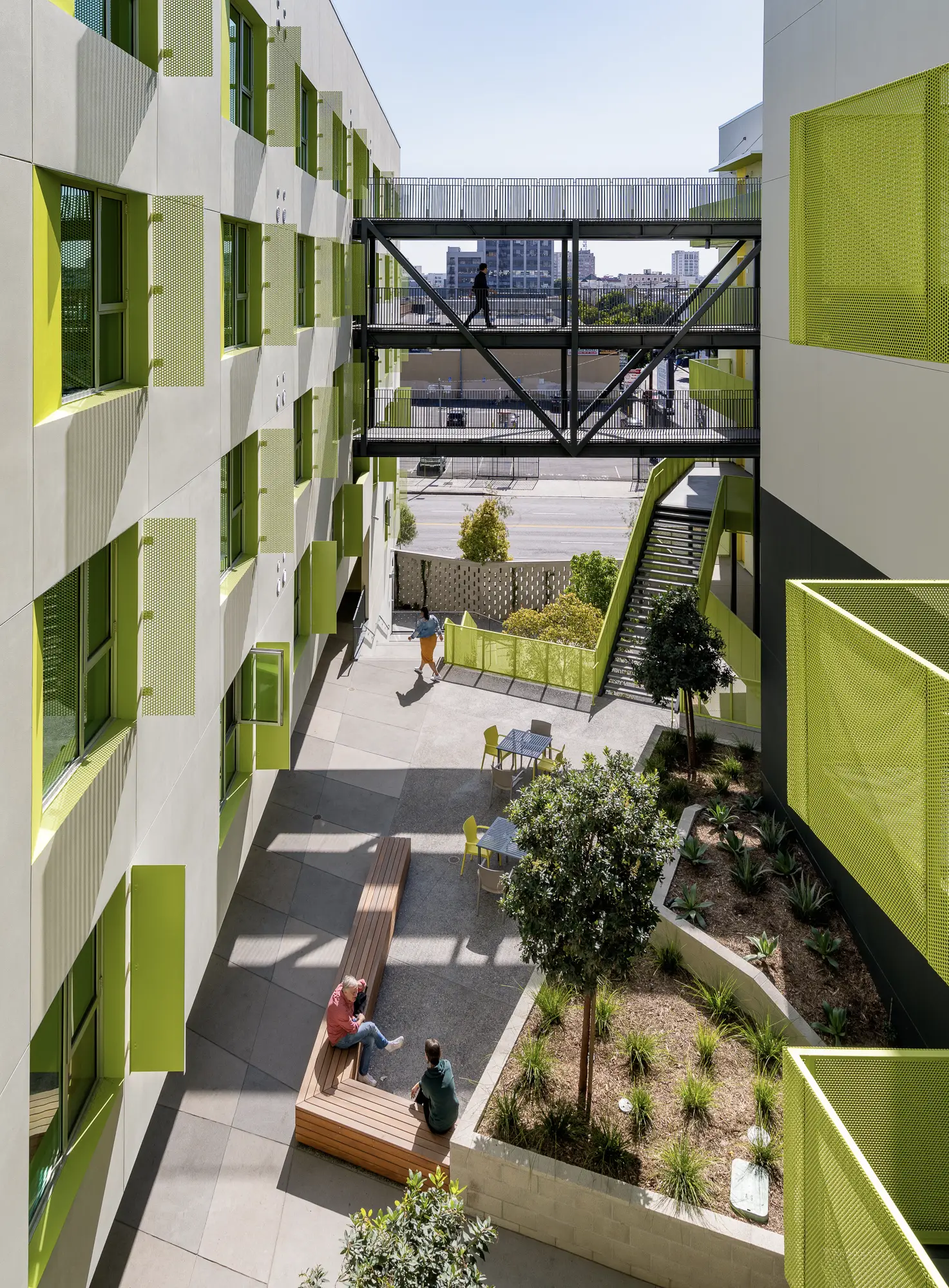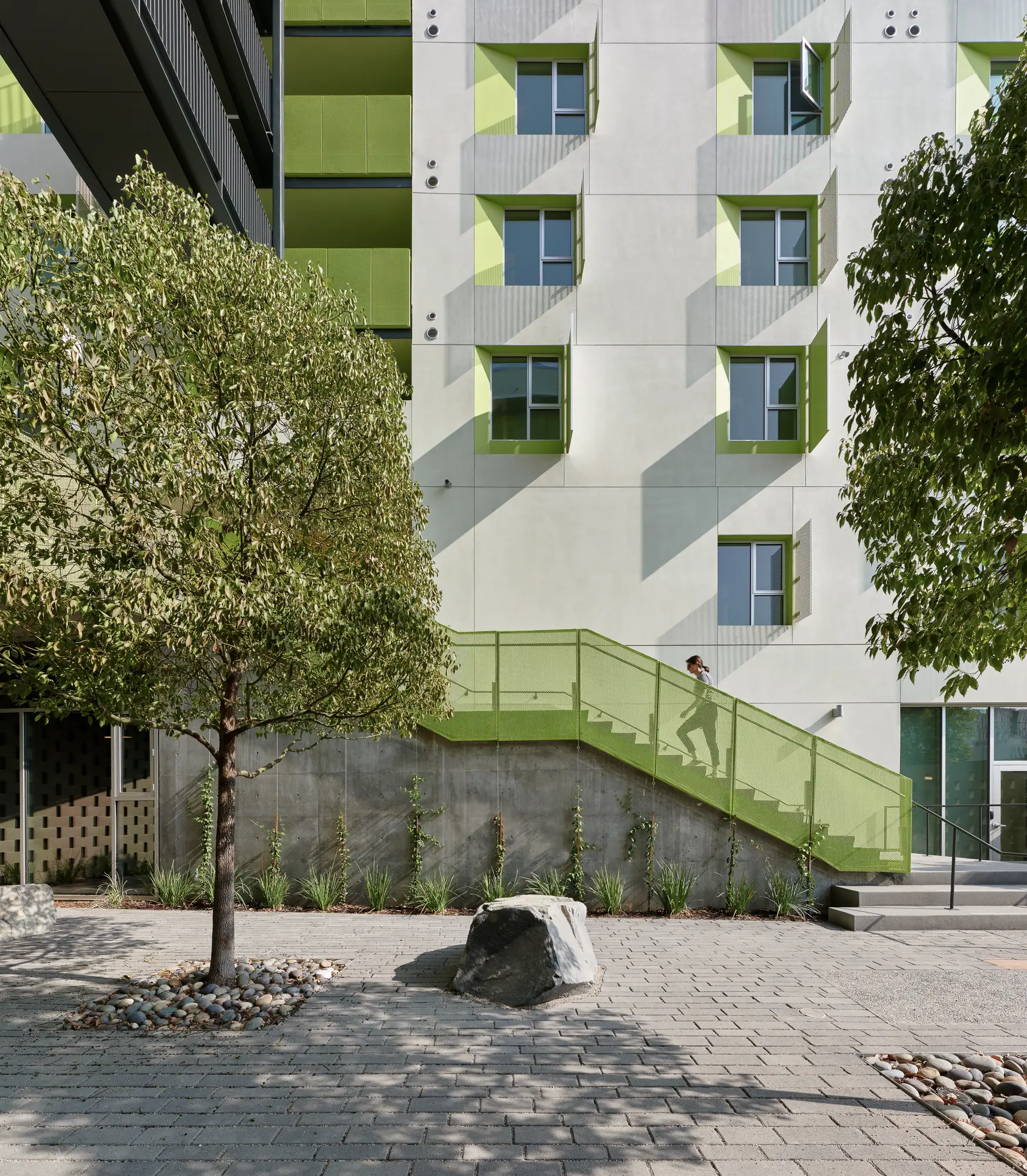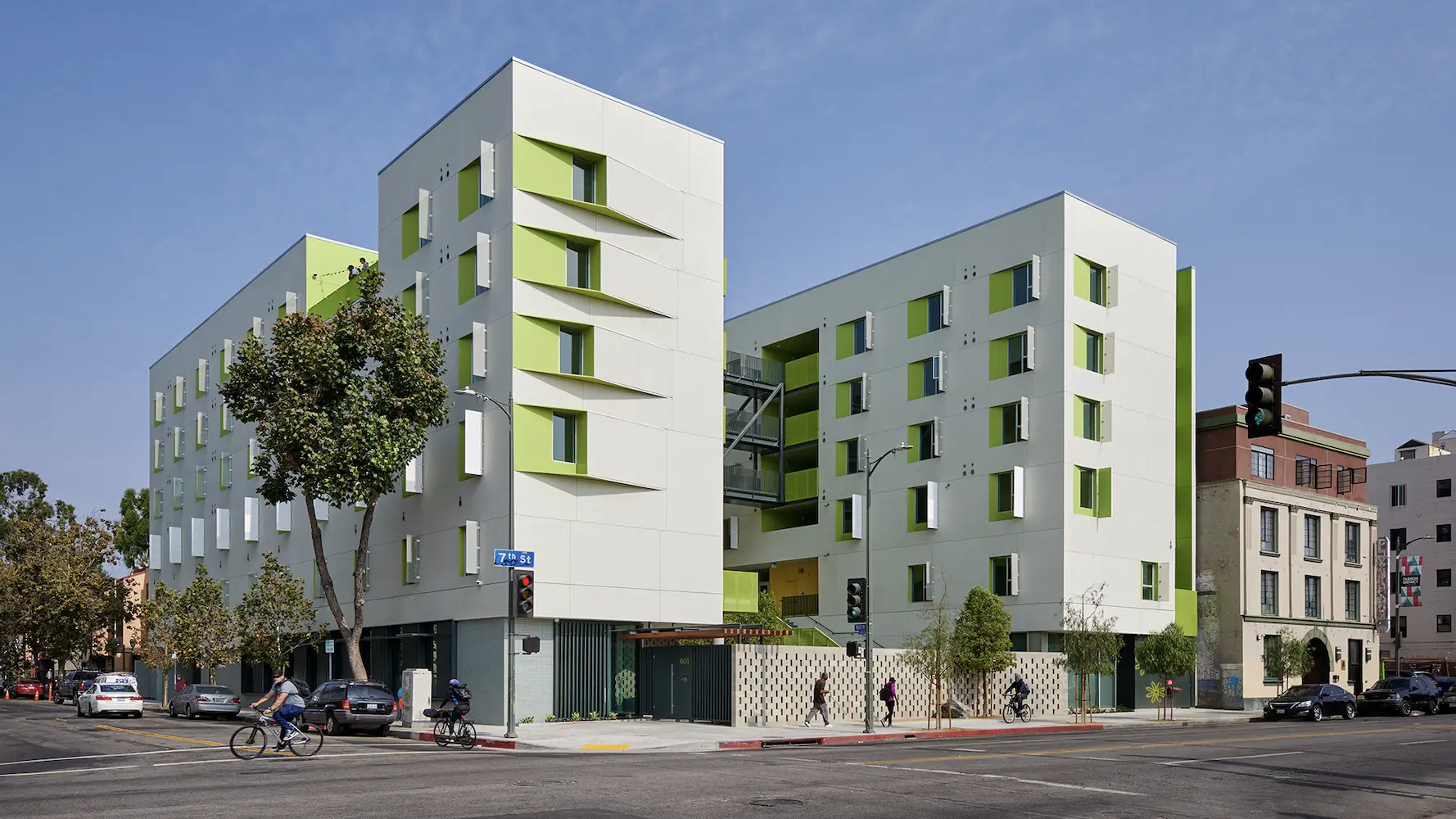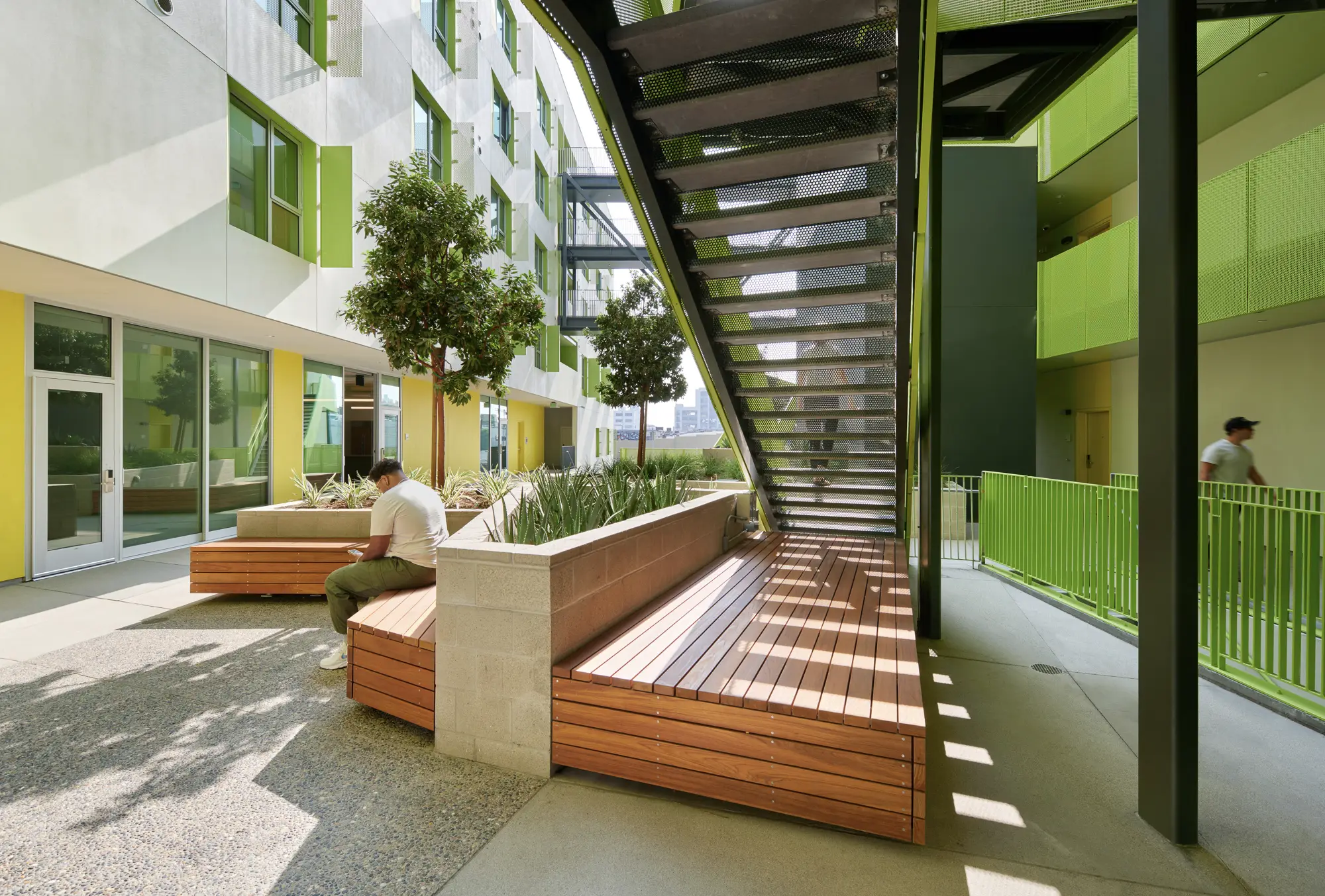Greening the site was integral to Koning Eizenberg Architecture (KEA)’s design for Flor Lofts, commissioned by the non-profit Skid Row Housing Trust (SRHT), in downtown Los Angeles.

Courtyard view at Flor Lofts. Photo © Eric Staudenmaier
“One of the first things we noticed was how leafless the streetscape was,” recalls KEA principal Brian Lane of this hardscrabble area. The idea that a biophilic environment could contribute to the wellness of the building’s residents—a formerly homeless population, struggling with such challenges as mental illness and substance abuse—and the neighborhood itself soon became essential to the architectural strategy. So, instead of maxing out the lot, KEA designed a 67,700-square-foot, six-story structure that’s U-shaped in plan, with 98 studio apartments, a manager’s residence, and supportive services, massed around a leafy courtyard. The open space’s new tree canopy extends to the public sidewalk, where KEA, with landscape architects Orange Street Studio, planted additional trees, successfully cutting through municipal red tape to do so. Within the forecourt, key circulation elements—such as connecting bridges overhead and a fire stair—remain outdoors, subtly yet cost-effectively promoting exercise, security, and casual social interaction.

Circulation elements are place outdoors to promote social interaction and exercise. Photo © Eric Staudenmaier
Flor means “flower” in Spanish, and, in that spirit, the entry sequence unfolds gently, with foliage-softened edges. Beneath a trellis that will eventually be vine covered, the front gate is perpendicular to the street and somewhat hidden from it—creating, as KEA founding principal Julie Eizenberg puts it, “both a safe haven and a welcoming threshold, like a boutique hotel.” Enclosing the courtyard along the sidewalk, a porous privacy screen of CMU block will also be wrapped in climbing plants.
The building’s entire design relies on easily maintained, economical materials and structural systems—such as stucco over wood-frame construction—applied in thoughtful and expressive ways. Window surrounds—rendered in a lime green that echoes the new landscape elements—project like bas-relief chevrons, giving the elevations a sculptural rhythm. Shutter-like fins provide for passive shading in this LEED-Platinum compound. Even exhaust vents, in a regular pattern on the facade, become compositional design elements without incurring extra cost. (At $ 31.7 million, the project came in under budget.)

Located on E. 7th Street, the building features 98 studio apartments and on-site support services. Photo © Eric Staudenmaier
Landscaping permeates multiple levels, including the building’s top floor, where residents can grow their own fruits and vegetables in raised planting beds. Throughout, greenery with seating is strategically placed—for example, near windowed laundry and recreational spaces—to foster indoor–outdoor flow and a sense of community.

Ample outdoor seating provides space for informal gatherings. Photo © Eric Staudenmaier
The building opened for full occupancy in 2021. But, in a subsequent turn of events, its owner, SRHT—a pioneer in supportive affordable and subsidized housing, with a 34-year history and 29 buildings in its portfolio—fell into financial straits. A crucial problem was the burden of maintaining its older properties, converted SRO hotels, in the face of inadequate cash flow. The Housing Trust is now in receivership, which means it’s under court-appointed management for reorganization. “In general—everywhere—it’s gotten increasingly hard to sustain affordable models for supportive housing, given decreased funding sources, vastly increased regulations, and a more challenging resident population,” says Eizenberg, “but we’re hopeful that solutions will be found.”


Post a comment to this article
Report Abusive Comment